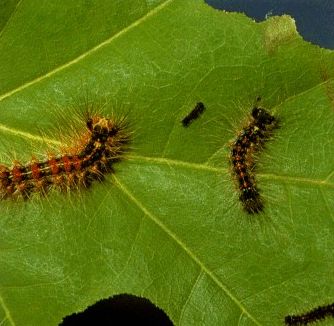By Kamal Rashid
 Here in the land of the CHO cell, an insect infestation may be on the horizon.
Here in the land of the CHO cell, an insect infestation may be on the horizon.
In January, Worcester Polytechnic Institute’s Biomanufacturing Education & Training Center offered an open webinar series on several bioprocessing and biomanufacturing topics. The series was developed primarily to convey timely information about single-use technologies and best practices both upstream and downstream to people working in the industry.
In Massachusetts and across New England mammalian cell based processes dominate the biomanufacturing sector, so two of the three webinars focused on specific information that could be applied to that sector. Those webinars were well attended, with nearly 100 people participating in each.
For the third presentation, however, I decided to take a bit of a risk. My talk was an overview of insect cell based bioprocessing using a baculovirus mediated expression system. The idea was to start a conversation about the advantages of insect cell systems among people who are focused primarily on mammalian cells. I was not sure how many people would take time from their busy day for this talk, so when 38 people participated in the live webinar, I felt that was a success. What happened next was a pleasant surprise.
After the live webinar, the slides and recorded talk became available on demand and we sent out the link to all who had registered so they could review or share the material. As of this writing, the insect cell presentation has been the most popular on-demand talk in the series, having been viewed 339 times. I suspect much of this was word-of-mouth sharing and some organic traffic. In any case, I am pleased to see there is growing interest in insect cell baculovirus expression systems, because it works so well for many applications. And we can thank the war against the gypsy moth for its development.
The U.S. Forest service notes that, “the gypsy moth, Lymantria dispar, is one of North America's most devastating forest pests,” capable of chewing through millions of acres of forest in a year. People have been trying to control the pest for more than 100 years, and the battle took a biotech turn in the 1980s when researchers began working with a virus that infected the dreaded moth.
It was a baculovirus, and soon it was engineered to be a Trojan Horse that carries a deadly gene into the moths. The technology worked flawlessly and precisely. This baculovirus infects only moths, no other organisms and causes no harm to humans. Today, a baculovirus based product is used in some areas to control the gypsy moth population.
The precision of the baculovirus technology was soon adapted for bioprocessing. Instead of delivering a toxic gene to a whole organism, the baculovirus can be used as a vector to deliver a beneficial engineered gene into a cultured insect cell and express a therapeutic protein or antibody. Insects are animals, so their cells provide a eukaryotic environment that can express large proteins with the post-translational modifications so important for many therapeutic applications.
Today, insect cell based biomanufacturing is growing in popularity because it is a less complex system for production of many proteins, antibodies and vaccines. For example, insect cells grow well at room temperature, without CO2, so the culturing process is simpler and more cost-effective. I believe in the near term we will see insect cell based bioprocessing grow into a fertile middle ground, in between microbial fermentation and traditional mammalian cell culture systems.
For newer companies, starting with an insect cell, single-use platform lowers the costs of entry and operations. Protein Sciences Corp. of Connecticut is an early leader in this regard, being the first to secure FDA approval for a new generation of flu vaccine made by insect cell processes. Established companies with mammalian cell based infrastructure can look towards a hybrid model of production and shift some of their development pipeline towards insect cell culture.
For these reasons, we have added an insect cell program to our curriculum at the BETC to give people an opportunity to work with the technology hands-on and evaluate how it may be applicable to their business plan.
As the biopharmaceutical industry evolves, with disruptive new technologies, the advent of biosimilars, and the growing ability to target smaller patient populations with rare disease therapies all putting significant cost pressures on legacy mammalian cell based manufacturing operations, insect cell culture systems can play an important role.
In other words, it’s a good time to be thinking about bugs.
Kamal Rashid, PhD., is the director of the Biomanufacturing Education & Training Center at WPI and a co-chair of the MassBio Biomanufacturing working group.